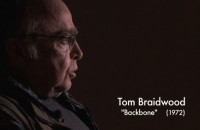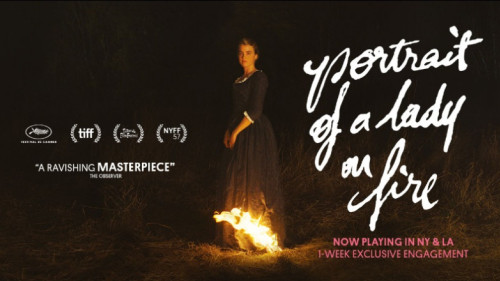Volume 21, Issue 4-5 / April–May 2017
National Canadian Film Day
In this issue
-

National Canadian Film Day 150
Taking Stock of Canadian Film
-

Top 10 Canadian Films, or Some Essential Canadian Viewing
-

Karen Walton in Montreal: Chatting About Ginger Snaps
-

Reviewing Vancouver’s Experimental Film Scene in Richard Martin’s Documentary Backbone
-

Bruce McDonald and Don McKellar’s Deconstruction of Canadian Realism: Roadkill and Highway 61
Being Canadian, or Not Being American
-

The Road, Red and White (and Blue): Canadian Identity in Bruce McDonald’s Road Trilogy
-

The Role of Women in Early Film Culture: Nell Shipman and Back To God’s Country (David Hartford, 1919)
-

Alfred Hitchcock & Grace Kelly
Dial M For Murder, Rear Window, and To Catch a Thief
-

The Objectification of Jennifer Lawrence in Contemporary Hollywood Cinema
-

21st Sofia International Film Festival: The Coming-of-Age Edition
The year 2017 marks the 150th anniversary of Canada. To honor this event REEL Canada and TIFF (the Toronto International Film Festival) selected a list of 150 representative Canadian films (see my Top 10 piece and Peter Rist’s article for more on the lists). April 19, 2017 was chosen as National Canadian Film Day 150, a day when Canadian cinema can showcase itself across the country. As part of the April 19th film festivities people across Canada were encouraged to draw from the list of 150 films and organize screenings in their local communities. The end result was a pretty impressive feat of Nation-wide collaboration, with, according to the National Canadian Film Day website, 1836 screening events across Canada and abroad, 125,000 estimated audience members and 659 communities worldwide taking part in the NCFD 150 event, making it perhaps the largest ever single day film event. The very useful NCFD website allows you to search the 150 films and actually see which ones were screened and where. I was a bit confused at first because of my colleague Peter Rist’s discussion of certain films on the list, which I could not find on the website. As it turns out there are in fact two 150 lists, one by TIFF and one by REEL CANADA. Although there are overlaps between the two lists, there are also considerable differences. Peter Rist in his piece discusses how the TIFF list was put together, which was a poll taken of industry professionals (film critics, journalists, filmmakers, scholars, etc.). The TIFF list was a conscious attempt at being fair to all forms of Canadian film, and television, and divided the list of “150 Essential Works in Canadian Film History” across all forms and mediums: 15 animated films, 10 commercials, 22 documentaries, 15 experimental film and video, 40 Features, 6 Moving-Image Installations, 10 Music Videos, 10 Shorts and 22 Television. In itself this is a VERY Canadian list, going out of its way not to overlook any sector or hurt any artistic feelings. You can call it the “Politically Correct” list. The REEL CANADA list was chosen to “reflect the vast range of stories that Canadians tell”. The emphasis is on “stories” since the majority of the films are fiction, with a handful of documentaries and NO experimental works. Call it the “Populist List”. With so much community involvement over Canadian cinema I thought it was appropriate to dedicate an issue —almost two issues— to Canadian cinema. The first three articles of this special Canadian double issue are directly centered around the National Canadian Film Day, with Peter Rist’s reflection on the event, my curated collection of Offscreen solicited Top Ten Canadian film lists, and my coverage of one of the Montreal-based NFDC events, a screening of Ginger Snaps, which culminated with an interview with invited guest, screenwriter Karen Walton. This is followed by four more pieces on Canadian cinema. Randolph Jordan returns to his geographical film roots with a review of Richard Martin’s little discussed documentary on the Vancouver Experimental film scene of the 1960s and 1970s, Backbone. David Hanley and Justin Langlois follow with differing but complementary essays on Bruce McDonald’s early ‘road movie’ features. Hanley focuses on Roadkill and Highway 61 and how they both exploit and veer from the tradition of Canadian film realism and its relation to American popular culture. Langlois adds McDonald’s Hardcore to the mix as well as key works by John Greyson and argues for the importance of the road movie to an understanding of Canadian identity, within the landscape of both Canadian and American popular culture, especially music. David George Menard also touches on the issue of Canadian Nationalism but as a backdrop to gender issues that cut across Canadian-American divide. Menard looks at the early career of Canadian actress/writer Nell Shipman and her seminal film Back to God’s Country and assesses how her struggles were a by-product of an industry predicated not only on profit but on a patriarchal ideology that denigrates women and non-white characters. Performance and star power connects Menard’s essay to the next two of three non-Canadian related pieces, Elaine Lennon’s in-depth study of the creative collaborations between Alfred Hitchcock and Grace Kelly and Tom Hemingway’s analysis of the star persona of Jennifer Lawrence. These three pieces link Hollywood and its treatment of star persona from its early days (Nell Shipman and the teens and twenties), to its classic period (Grace Kelly and the 1950s), to the post-studio twenty-first century (Jennifer Lawrence). Lennon explores aspects of Kelly’s collaboration with Alfred Hitchcock, “centering on marriage, mystery and suspense in a triptych of theatrical artifice for cinema in glorious Technicolor” (Lennon). In his study of star power Tom Hemingway looks at the way certain films, The Hunger Games, Silver Linings Playbook, and Winter’s Bone, have projected a star image of Jennifer Lawrence that is both classical —emphasizing her physical beauty— and modern –exploiting her ability to play psychologically strong and smart women. In the final piece Christina Stojanova returns to Offscreen after a long hiatus, with a report on the 21st Sofia International Film Festival. (Donato Totaro, ed.)









